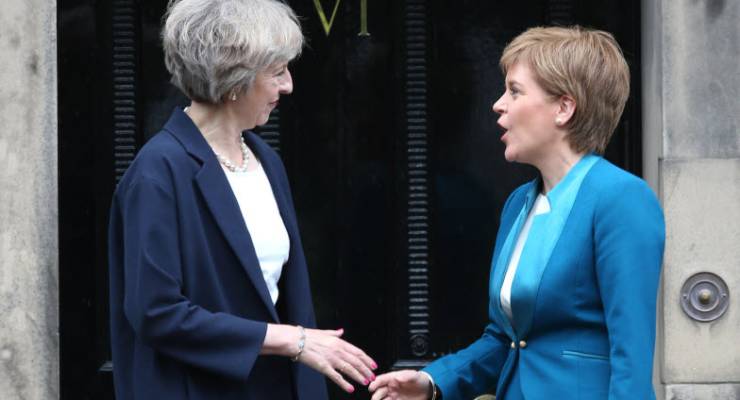
Unless you’ve been living under a rock for the better part of a year, you’ll know that “Brexit” will go down in history as the day that legions of grey-haired conservatives came out in unprecedented numbers and cast their vote, thrusting the UK into a future “free” from, and unshackled by, the apparent constraints of the European Union.
The “leave” result was surprising to say the least. The youth of the UK were incensed, and the world’s collective jaw dropped in clammy shock. But soon it was eclipsed by the clammier shock of Trump’s ascendance to the US presidency, and Brexit took a bit of a backseat. Recently, however, it has started to crop up again, and we thought we’d check in on the progress.
How does the UK go about actually separating itself from Europe?
Considering that no state has ever left the European Union before, the process is unclear and the road ahead must be forged (or fumbled along) in thick fog. Or as Dr. Remy Davison says, it’ll be much like “unscrambling an egg”.
The next step is royal assent, i.e. when the Brexit bill becomes law. Then, to officially get the ball rolling on Brexit negotiations, Theresa May will need to trigger article 50, a rather skimpy clause in the European Union’s Lisbon Treaty, which outlines the steps that must be taken for a member country to successfully exit the EU. Alarmingly, Lord John Kerr, who oversaw the drafting of this provision, assumed its only vaguely possible use would be to oust a rogue dictator.
Once all that’s done, the process of “conscious uncoupling” (thanks for the terminology, Gwyneth) commences and needs to take place within a specified two-year time frame — with all negotiations completed by April 2019.
Some key points to note about article 50:
- It gives a member state two years to negotiate exit deals;
- Once triggered, it cannot be halted or repealed except by unanimous consent of all member states; and
- Any deal must be approved by a “qualified majority” of EU member states.
So what actually happened in the British Parliament?
After the House of Commons’ landslide vote in favour of the Brexit bill (498 to 114), the upper chamber of the UK Parliament, the House of Lords, added two amendments to the bill: one sought to give MPs a “meaningful vote” on the final Brexit deal; and the second would’ve guaranteed protection for EU citizens living in the UK. Both amendments were promptly scrapped by the House of Commons. The return-serve to the Lords was met with a white flag and they kicked the bill through, perhaps in a last-ditch effort to appear unified and avoid what’s called “ping-pong” (it’s probably pertinent to add here that there was talk from the Conservatives of abolishing the House of Lords if they attempted to delay Brexit).
You can see a pretty good chart of the political process here.
OK, so what’s going on with Scotland?
The Brexit results showed that Scotland voted overwhelmingly to remain in the European Union with 62.0% of voters ticking the “remain” box. Given that, in 2014, Scotland voted to continue as part of the UK, the Brexit vote was not without a distinct sting for many Scots who are now being dragged off on an adventure they didn’t really sign up for.
Fast forward to early 2017, and Scotland’s First Minister Nicola Sturgeon spoke of her hopes to establish a second Scottish independence referendum before Britain’s exit from the European Union. As The Telegraph reports, Theresa May promptly shot those aspirations down, stating that she will only look at holding a second independence referendum once the Brexit negotiations are complete and Britain has successfully separated itself from the EU.
What happens if Scotland leaves the UK after Brexit?
Despite May’s firm dismissal of an “indyref2” (the hashtag for a second independence referendum) before Brexit, Sturgeon is still keen for a referendum sequel. Although now she’s being a little more flexible with the dates, saying “the vote must take place to allow an informed choice to be made — when the terms of Brexit are clear but before the UK leaves the European Union or shortly after”. In this way, Scotland will have the ability to look at their options in sharp contrast; leave the EU or leave the UK.
It is important to note here that a European Commission spokesperson has recently said that an independent Scotland would need to apply to join the EU. Although it’s generally assumed that they’ll eventually get back in, there are many unknowns around exactly how long it will take to negotiate a re-entry as an independent state and what will happen in that limbo period.
So how long will it take to ‘Brexit’, really?
This is a colossal question mark. Although May is firm on a neat and tidy two-year turn around (after all, she kinda has no choice) and a “hard” (rather than a “soft”) Brexit, there are plenty of naysayers who believe that realistically, this kind of deeply complex disentangling will take rather a lot longer.
What’s more, some recently leaked Whitehall documents obtained by The Times suggest that UK Parliament will need to pass at least seven new bills to prepare Britain for its exit from the EU. This new slew of bills will cover immigration, tax, agriculture, trade and customs regimes, fisheries, data protection and sanctions. The process of passing these bills will provide the democratic political process plenty of opportunity to impede that two-year negotiation limit outlined in article 50.
As you can tell, when it comes to Brexiting, there are many questions and a real dearth of answers. There seems to be little talk of contingency plans if negotiations fail, with Brexit Minister David Davis saying “one of the reasons we don’t talk about the contingency plan too much is we don’t want people to think this is what we are trying to do”.
In a recent private briefing, UK’s then amabassador to the EU reportedly warned ministers that Brexit could take up to 10 years and still fail miserably while the more extreme end of speculation is whispering of possible Russian involvement in the Brexit referendum.
The plot thickens to a remarkably egg-like consistency.








Is there something a bit unpleasant about singling out “grey-haired conservatives”?
After all, in the statistics in the link, low education was a stronger correlation than age in voting Leave. Did “legions of low-educated conservatives” sound a bit too sneering?